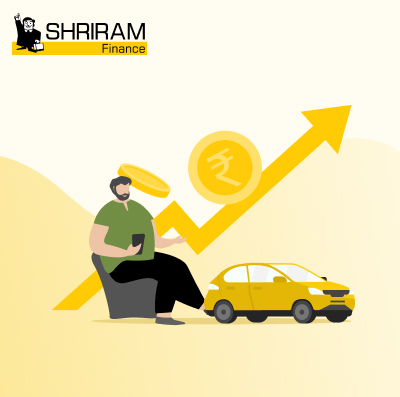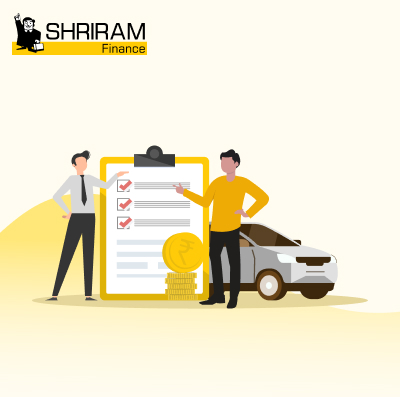Taxi drivers in India often need a dependable car to run their business, but buying one can be costly. A used car loan helps them afford a vehicle by paying in small monthly amounts. The interest rate on these loans decides how much extra they will pay. This article explains the interest on second-hand car loans, covering what they are, what affects them, and how to manage them. So, let us get started:
What are the Interest Rates on Used Car Loans?
Interest rates are the extra money you pay to borrow a loan. When a taxi driver takes a used car loan, the loan provider gives money to buy a second-hand car, and you repay it with some extra, called interest. This interest is usually a percentage of the loan amount. For Indian taxi drivers, knowing about interest rates is important because they affect monthly payments and the total cost of the loan.
How Interest Rates Work
When you borrow money for a used car, the financial institution adds interest to the loan amount. For example, if you borrow ₹5 lakh at a 10% interest rate, you will pay back more than ₹5 lakh. The low-interest used car loan for taxi drivers is typically spread over monthly payments, so you pay a little every month. Taxi drivers in India usually repay these loans over 1 to 7 years, and the interest rate decides how much extra they pay.
Factors That Affect Interest Rates
Several things can change the used car loan interest rates for taxi drivers in India. Here are the main ones:
1. The Car’s Age and Condition
Older cars or those in bad condition are often riskier for financial institutions. They might charge a higher interest rate because the car’s value could drop fast. A newer used car in good condition, like a 2-3-year-old Maruti or Tata, might get a lower rate since it holds more value.
2. Your Credit Score
A credit score shows how well you have repaid loans before. If a taxi driver has a good CIBIL score (typically above 700), lenders usually offer a lower interest rate because they trust you will pay back. A lower score (below 600) might mean a higher rate, as the loan provider sees more risk.
3. Your Income
Loan providers often check a taxi driver’s income to see if they can pay the monthly instalments. Steady income from ride-hailing platforms can improve eligibility, though lenders may require additional documentation, such as 6–12 months of bank statements, to verify earnings. If income is not regular, loan providers might charge more.
4. The Lender’s Policies
Different lenders in India, such as banks or non-banking financial companies (NBFCs), have different rules. Some lenders focus on taxi drivers and might offer better rates, while others charge more for used car loans. Local finance companies might also have special schemes.
5. Loan Amount and Term
The loan amount and repayment time can affect the rate. Smaller loans or shorter tenures (such as 1-3 years) might have lower rates because they’re less risky. Larger loans or longer tenures (such 5-7 years) might come with higher rates.
Interest Rates for Used Car Loans in India
Used car loan interest rates for taxi drivers in India are usually higher than for new car loans because used cars lose value faster. Taxi drivers' rates typically starts from 10% onwards, but they can vary based on the factors above. For example:
A driver with a good CIBIL score and a newer used car might get a rate around 9-11%.
A driver with a lower score or an older car might face rates of 12-15% or more.
These rates depend on the loan provider and the city, like Mumbai, Delhi, or smaller towns.
Why Interest Rates Matter for Indian Taxi Drivers
Taxi driver car loan rates are important because they affect how much you pay each month. A higher rate means higher monthly instalments, which can be hard for taxi drivers with uneven earnings, like during low-demand seasons. A lower rate makes payments easier and saves money over time. For example:
A ₹5 lakh loan at 9% interest for 3 years might cost about ₹15,800 per month.
The same loan at 13% interest might cost around ₹16,600 per month.
Over 3 years, the higher rate adds thousands of rupees to the total cost.
How to Get a Lower Interest Rate
Taxi drivers in India can try these steps to get a better interest rate:
Improve your CIBIL score: Pay EMIs and bills on time and reduce other debts before applying. This may take time but can help get a lower rate.
Choose a newer car: A car that is 2-4 years old and in good condition, like a Maruti Dzire or Hyundai Xcent, might get a better rate.
Compare lenders: Check rates from financial instituitions. Some may have special offers for taxi drivers.
Make a down payment: Paying 10-20% upfront reduces the loan amount, which can sometimes lower the interest rate.
Pick a shorter term: Shorter terms (like 2-3 years) often have lower rates, though monthly payments will be higher.
Conclusion
When taxi drivers in India look to buy a used car, the interest rate they get is shaped by several factors like how old the car is, their CIBIL score, how steady their income is, and the policies of the lender. It’s wise to check offers from different banks and NBFCs and to pick a reliable car in good condition. Most lenders will let you repay the loan over a period of up to four years and may cover up to 85% of the car’s price, making repayments more manageable for your business.































